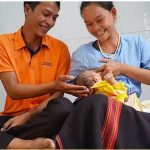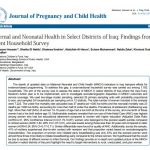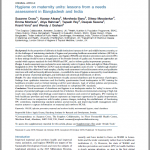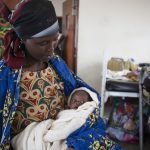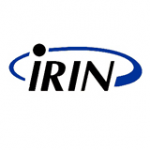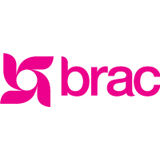
BRAC believes that poverty must be tackled from a holistic viewpoint, transitioning individuals from being aid recipients to becoming empowered citizens in control of their own destinies. Over the years, BRAC has organized the isolated poor, learned to understand their needs, piloted, refined and scaled up practical ways to increase their access to resources, support their entrepreneurship, and empower them to become active agents of change. Women and girls have been the central analytical lens of BRAC’s anti-poverty approach, recognizing both their vulnerabilities but also their thirst for change.
Today in Bangladesh alone, BRAC works to combat poverty in 70,000 villages and 2000 slums, and reaches three quarters of the entire population with an integrated package of services for rural and urban communities. We employ more than 100,000 people – microfinance officers, teachers, health staff, and enterprise managers – to be on the very doorstep of the poorest families making our services accessible, relevant and adaptable. We have learned over time to find the poorest of the poor – those who are destitute and outside the reach of most NGOs – and help them rebuild their lives from scratch and achieve financial independence.
What we do
Holistic approach – a complete model for poverty alleviation
We understand that when a person is poor, they are poor for a whole number of reasons that compound the disadvantages they face – a poor landless family struggles to secure an income against rising food costs, frequent natural disasters and the threat of ill health and malnutrition. They also lack access to markets and decent supplies, credit, savings and insurance, safe water and sanitation, and a quality education for their children.
BRAC has established a complete set of services for poor, disadvantaged families that helps them, through small incremental steps, to leave poverty behind and look forward to a positive future.
Village organisations
At the centre of our approach are village organisations (VOs) -each with 30-40 women members – which are set up to provide social support and microfinance services. These village organisations meet weekly to distribute loans, collect repayments and savings contributions, and raise awareness on many social, legal and personal issues affecting the everyday lives of poor women. They also give training and support to the microfinance borrowers so they can use the money productively and effectively.
While BRAC has more than 7 million women participating in our village organisations and accessing our financial services for the poor, we provide services to millions more women and their families – not just our village organisation members. A poor woman in the village can rely on BRAC to provide her with essential health care, education for herself and her family, business support, legal assistance and a voice in local issues.
Increased outreach and impact
The village organisations are also the recruiting ground for some of our key community workers – such as the community health volunteers, agricultural extension workers, and paralegal volunteers – who enable BRAC to increase the outreach and impact of our programmes.
For instance, our 68,000 community health volunteers make home visits to 18 million village households every month and provide the first line of support in our essential health care programme. Every week, 1.55 million children attend our primary and pre-primary schools and are taught by more than 50,000 trained teachers – teachers who are drawn from the communities they live in. In total, we cover an estimated 110 million people with our services in microfinance, health, education, social development, human rights and legal services, and microenterprise support.
Pro-poor enterprises – long term financial sustainability
As well as our core programmes, we also have our own social enterprises. These are commercially operated, pro-poor enterprises which are strategically linked to our development programmes and form the crucial value chain linkages to increase productivity of assets and labour and reduce the risks of the enterprises of the poor.
For example, a poor farmer who takes out her first small loan to purchase some poultry birds is at the centre of a well orchestrated support structure that ensures she is able to get a good return. She receives training on modern poultry farming techniques, can purchase high yield variety chicks from our hatcheries, buy good quality poultry feed from our feed mills, and control poultry disease through our vaccination services. Just providing the loan is not enough; we have looked at the whole supply chain – both upstream and downstream – both backward and forward – and strengthened that chain to maximise the benefits for the enterprises of the poor.
Focus on empowering poor rural women
From the beginning, BRAC has recognised that destitute rural women, while being the worst affected by poverty, can play a crucial role as agents of change. Rural women are placed in a vulnerable position as employment opportunities are limited and they lack health care services, receive less nutrition, and are less educated than their male counterparts. Also the growing number of female-headed households, as a result of the death of the male earner, divorce, desertion and male migration, has left many women at the helm of their households. With all these factors in mind, BRAC focuses mainly on rural women, giving priority to their needs, bringing about meaningful transformation in their lives by making small loans available to them for income generating activities. We also provide livelihood development training, microfinance and social support to adolescent girls to help them prepare for adulthood and empower them to make their own choices for the future. Today, more than 98% of BRAC’s 7.37 million borrowers and savers are women.
Making a significant difference
The national scale and impact of our anti-poverty interventions are what makes BRAC unique in the development community. The programmes evolve over time and we innovate, scale up and respond to changes and challenges. We believe in scaling up to have an impact at the national level. We have an expansive grass roots infrastructure that ensures our reach is national and we can implement programmes quickly and efficiently. For instance, our new flagship Water, Sanitation and Hygiene Programme, began as a sanitation pilot under the Essential Health Care Programme and has since been rolled out to 150 sub-districts. It is the first integrated approach to water, sanitation and hygiene that involves the entire population of an area and we are aiming for national coverage by 2015. Our logistical infrastructure was also crucial when we needed to mobilise 2,500 field staff positioned in the Cyclone Sidr affected area for emergency relief work in November 2007.
Going international
Scaling up poverty reduction innovations is a major challenge faced by governments and NGOs in most developing countries. Our experiences in Bangladesh of innovating new approaches in many key areas of development and taking them to scale rapidly against a range of constraints is of significant relevance for the fight against poverty in other developing countries. It is this experience, expertise, and attitude with a southern core and perspective that BRAC intends to deploy in helping the poverty reduction efforts of other developing countries.
BRAC Afghanistan was the first of BRAC’s international initiatives. Our microfinance programme is operating across 75% of the country and is a lifeline to more than 179,000 households whose livelihoods have been devastated by decades of conflict and uncertainty. In Africa, BRAC has been able to scale up in Tanzania and Uganda after only eighteen months of operating in the region and is already helping 117,000 households in those two countries – with further plans to help the citizens of Sierra Leone and Liberia rebuild their lives after decades of disastrous civil wars. Future Vision When the world is free from hunger and poverty, BRAC’s work will be done. Until then, we will strive to find practical and scalable approaches to eradicate poverty wherever we find it.
With one billion people in the world today still suffering from poverty, the task ahead is enormous. Even in countries which are making good progress on economic growth and many of the MDG goals, there are second generation development challenges that remain to be solved. These include: the need to provide quality education for all; reduce maternal and neonatal mortality; expand the frontiers of sustainable agriculture production; adapt to climate change; and sustain and expand the gains made by the poor in a globalised economy. BRAC will be working actively and in close alliance with civil society, private sector, government and knowledge institutions, in addressing these challenges.
